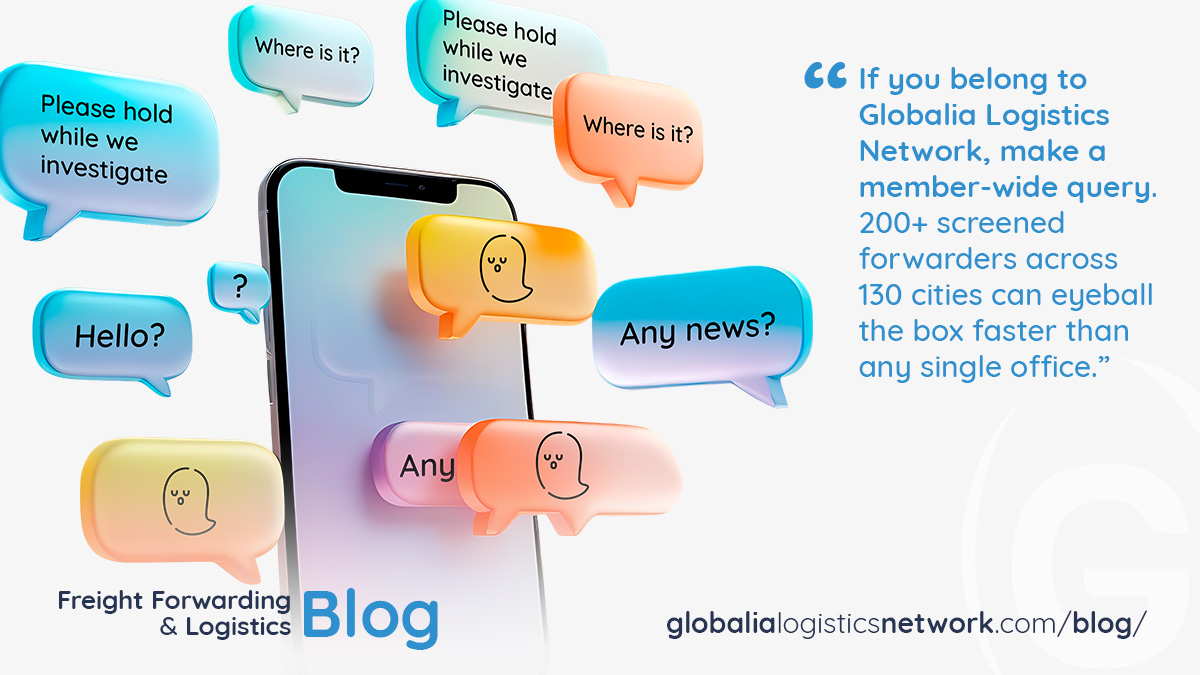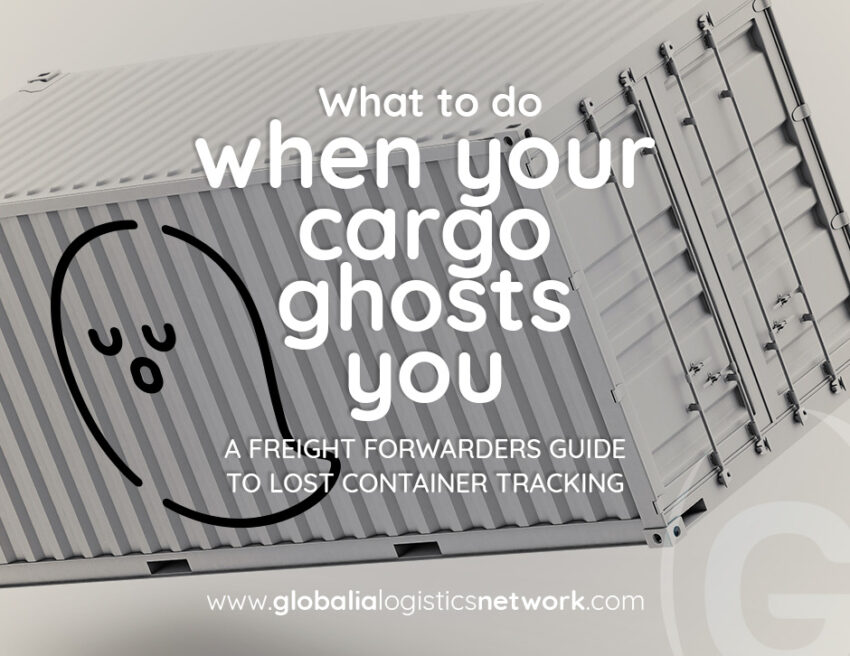When your container pulls a disappearing act
There are few things more frustrating in logistics than watching a carefully planned shipment vanish into the digital abyss. One moment it’s “safely loaded aboard,” and the next, it’s somewhere between here, there, and “please hold while we investigate.” Yes, we’re talking about that all-too-familiar freight forwarding nightmare: the missing container. No updates. No scans. No explanations. Just you, your tracking screen, and the creeping suspicion that your cargo has developed sentience and decided to take a vacation. Losing sight of a container isn’t just annoying; it can delay entire supply chains, upset clients, trigger claims, and leave forwarders stuck in a loop of follow-ups with shipping lines, agents, and port authorities. The worst part? The silence.
In this guide, we’ll walk through exactly what to do when your container “ghosts” you, how to master lost container tracking, and why being part of a reliable logistics network like Globalia Logistics Network can make all the difference between chaos and quick recovery. Because sometimes, all it takes is one well-placed call or a network of 200 reliable partners to bring that ghosted container back from the dead.
How do containers go AWOL? (AKA, The Bermuda Triangle of containers)
Before you blame gremlins, here are the mundane yet maddening reasons containers slip into the ether:
-
Data Lag
IoT devices ping less often once a ship leaves port. A 12‑hour satellite gap can feel like 12 days. -
Transshipment Black Holes
Your box hops from Mother Ship A to Feeder Vessel B—while System C still thinks it’s chilling in yard D. -
Port Congestion & Container Stacks
Bigger terminals = higher stacks = RFID tags buried deep enough to hide from scanners (and common sense). -
Documentation Typos
One digit off in your booking reference and the container now belongs to an entirely different exporter. -
Theft or Misplacement
Rare, but it happens—especially with high‑value or easily fenced cargo like electronics.

Step‑by‑step lost container tracking action plan
1. Stay calm and verify the basics
-
Double‑check the container number, booking reference, and vessel name.
-
Confirm the last recorded ETA and ETD.
-
Rule out a simple typo before launching the freight equivalent of a nationwide Amber Alert.
2. Tap every data source—FAST
-
Carrier Portal: Scan for hidden alerts on transshipment or customs holds.
-
AIS/Vessel Tracking: Sites like MarineTraffic can reveal if the ship diverted for weather.
-
Terminal Systems: Some ports offer live yard visibility; request a manual lookup.
3. Activate your logistics partners
Call your destination agent, transshipment port partner, and local liner rep. If you belong to Globalia Logistics Network, make a member-wide query. 200+ screened forwarders across 130 cities can eyeball the box faster than any single office.
4. Escalate to the carrier’s control tower
Politely threaten (with facts, not fury) to lodge a claim if the container isn’t located within 24 hours. Ask for:
-
Gate-in / gate‑out times
-
EIR (Equipment Interchange Receipt) copies
-
Load lists for each leg
5. Check with customs
A “missing” container sometimes just enjoys an unplanned vacation in a bonded warehouse pending inspection. Customs brokers can query the AMS/ICS entry for you.
6. File an internal incident ticket
Document every call, email, and screenshot. Insurers and P&I clubs adore timelines—future‑you will, too.
7. Launch mitigation measures
-
Arrange alternate stock from a different origin.
-
Alert your consignee about potential delays (honesty beats angry surprises).
-
Explore fast‑track options: split shipments, air freight, or rail if feasible.
Tech that cuts the ghost story short
IoT trackers & smart seals
Battery‑powered devices transmit location and shock data every few minutes. They’re cost‑effective on high‑value or time‑critical cargo like pharma or luxury retail. Bonus: they provide indisputable evidence when containers don’t move.
Blockchain‑driven digital twins
Immutable logs mean every touchpoint is stamped on‑chain, reducing “he‑said she‑said” disputes.
Predictive ETA platforms
AI models crunch weather, port congestion, and historical drift to recalculate arrival times hourly—so you know a box is “late” before it’s technically missing.
Smart containers: Your container’s way of texting you back
Smart containers are revolutionizing lost container tracking by turning passive steel boxes into active communicators. Equipped with built-in GPS, temperature, humidity, and shock sensors, these containers provide real-time updates directly from sea, port, or truck. Instead of relying solely on carrier portals or port scans, you get live intel—like “your container just left Jebel Ali” or “your reefer’s temperature is climbing.” While not yet standard for all shipments, smart containers are increasingly offered as part of premium services or via tech-forward carriers. For high-value, sensitive, or time-critical cargo, they’re worth every byte of data.
A network safety net: How Globalia helps banish the container poltergeist
-
Vetted Partners: Globalia screens agents for financial strength and credibility, so your distress call reaches reliable pros, not ghosts.
-
Payment Protection Plan (PPP): If the worst happens and a vendor flakes, Globalia’s optional PPP cushions the financial blow.
In short, when your container vanishes, it’s nice to have nearly 200+ colleagues who pick up the phone.
The claim game: If the container is truly MIA
-
Review Incoterms – Know who bears risk at each leg.
-
Contact Insurers ASAP – Most policies require notice within 3‑7 days of discovery.
-
Collect Evidence – Tracking logs, signed CMR/BL copies, photos of loading, IoT data.
-
Quantify Losses – Include direct cargo value and indirect costs (penalties, lost sales).
-
Negotiate or Litigate – Carriers cap liability by weight unless negligence is proven. Lawyers may become your new BFFs.
Future‑proofing against lost containers
-
Diversify Routing: Don’t funnel all boxes through the same congested hub.
-
Implement Pre‑Alerts: Automated milestones (loaded, departed, arrived) sent to all stakeholders.
-
Set KPIs: Track “container visibility rate” and “exception resolution time” in monthly reviews.
-
Educate Clients: Share this blog—or your own crib sheet—so they recognize early warning signs.
Conclusion
The next time your container decides to play Casper, remember: panic is optional; process is mandatory. By mastering lost container tracking, leveraging tech, and tapping a solid network like Globalia Logistics Network, you can turn logistics horror stories into mere anecdotes for the next corporate happy hour.
May your future containers stay firmly in the land of the living and if they do ghost you, you’ll know exactly how to drag them back into reality.


